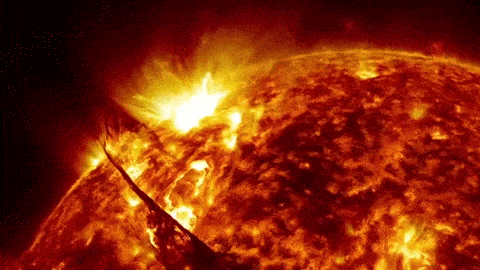The Sun and Earth’s Climate: The Solar Cycle and the Maunder Minimum
The Solar Cycle
The Sun goes through an approximately 11 year periodic solar cycle (Gnevyshev 1967). This cycle includes variations in solar irradiation, the amount of ejected materials, solar flares and sunspot activity. Total Solar Irradiance (TSI) is measured in power per unit area (energy per unit time per unit area), and is of particular importance in that it represents the total incoming energy driving the climate system.
Since we’ve only had direct satellite measurements of TSI since the mid-late 1970s, estimates of solar output for earlier times were (and are) based on one or more proxies. Sunspot observations are one such proxy. Sunspot abundance correlates strongly with TSI, so they can thus be used as a proxy for solar maxima and minima. Astronomers have recorded telescopic sunspot observations since the early 1600s, and there is evidence of naked eye observations dating much further back (Stephenson 1990). In addition to noticing that the number of sunspots oscillated in 11 year cycles, astronomers also noticed that sunspots would first appear in pairs or groups at about 30 – 35 degrees both North and South of the solar equator, and the mean latitudes of subsequently appearing spots would tend to migrate towards the solar equator as the cycle progressed, a phenomenon referred to as Spörer’s Law (Carrington 1858, Carrington 1863, Spörer 1879). (more…)

